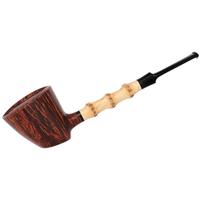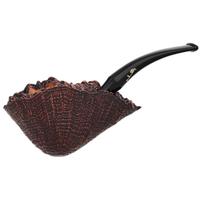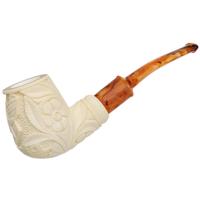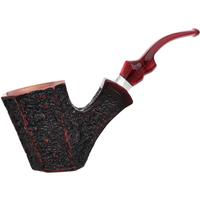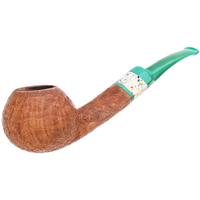I've come to realize that you are the absolute best fabulist I've ever come across. Your straight face is without equal. And your nonsense makes excellent sense. Unfortunately, that means that I no longer believe a single word you say. Even when I'm otherwise persuaded. Especially when I'm otherwise persuaded. Like if you'd tell me that the sky is blue; I'd check first. I'm not saying this because I dislike you. Quite the opposite. I like you and hope to be able to smoke a pipe with you someday. I mean for this post to amuse, not offend. ?
Do have have proof, pictorial or otherwise, that the bead was used to attached the metal cap? Why aren't there beads on other shapes to hold caps?
Ok, so me being an absolute liar is hinged on the one fraction of my post about the cap being held on... out of all of my 25,000 posts? Ha ha! Ok... I do not say with absolute authority that this is why there is a bead line. It is an assumption that I have made based upon a box of stummels with caps that I bought from The Briary that "I was told" came from the first line of bulldog pipes made in France. Skip, owner of the Briary, has a section of the store devoted to pipe history he has built with aid from some of the top names in pipe lore. And, if he tells me they were from the first mass produced... I am not aware of anyone who has enough knowledge to counter that. He has owned that shop and been entrenched in pipes since 1972. He has folders of broadleafs and printed materials on pipe history, original museum quality stuff.
I noticed that the caps had a snap to the bead line on all of the ones I have. Now, why do these have a snap to them? I assume it made keeping the cap on, with just two brads, a whole lot easier, or maybe it helped to line up the caps in mass production. Were they originally designed for this very purpose? It would make a whole hell of a lot of sense if they were. If they weren't it was a stroke of luck maybe?
Why do other designs with caps not have caps that snap to the beadline? There we are outside of my interests, so I have no idea? I am pretty sure that a billiard shape cannot be fully fraised on a slot and peg. It has to be removed and the lines cleaned up. Mostly billiards are made on lathes. But, as I've said, I am no expert, nor even aware of other shapes that were fraised.
We had a bulldog collector that his focus was on the first bulldogs come and talk to our pipe club, and he was the one who told me about these slot and peg fraise machines. And, the bulldog having it's weird shape because it could be mostly fully fraised on it. This is NOT a lathe, but an old timey cutter than can do all sorts of shapes.
So, none of this is my invention, nor my research. However, I have tried to find out as much as I can about these early fraising machines, and the closest I could find was one at a gemshow that cut stones and gem material into very intricate shapes, like skulls, chess pieces, and women's handheld mirror frames. But, it was too small to make a pipe on it. I really do want to one day take a good look at one. I am sort of mass production geek.



